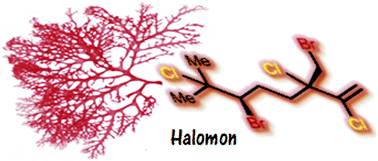Algae metabolites: from in vitro growth inhibitory effects to promising anticancer activity
Abstract
Covering: 1957 to 2017
Algae constitute a heterogeneous group of eukaryotic photosynthetic organisms, mainly found in the marine environment. Algae produce numerous metabolites that help them cope with the harsh conditions of the marine environment. Because of their structural diversity and uniqueness, these molecules have recently gained a lot of interest for the identification of medicinally useful agents, including those with potential anticancer activities. In the current review, which is not a catalogue-based one, we first highlight the major biological events that lead to various types of cancer, including metastatic ones, to chemoresistance, thus to any types of current anticancer treatment relating to the use of chemotherapeutics. We then review algal metabolites for which scientific literature reports anticancer activity. Lastly, we focus on algal metabolites with promising anticancer activity based on their ability to target biological characteristics of cancer cells responsible for poor treatment outcomes. Thus, we highlight compounds that have, among others, one or more of the following characteristics: selectivity in reducing the proliferation of cancer cells over normal ones, potential for killing cancer cells through non-apoptotic signaling pathways, ability to circumvent MDR-related efflux pumps, and activity in vivo in relevant pre-clinical models.



 Please wait while we load your content...
Please wait while we load your content...